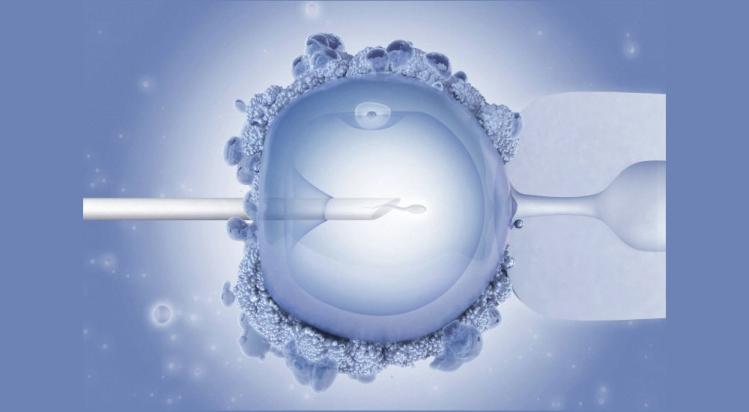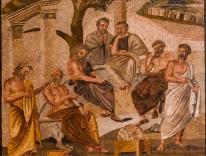
Two news stories from the United Kingdom caught my eye recently. One reported the approval by the House of Commons of a procedure allowing the procreation of a baby with three parents—a donor egg with an altered nucleus that had been fertilized and implanted in a surrogate mother. The other covered the decision by a court to allow a gay man to procreate a child with an anonymous donated egg and his mother serving as the birth surrogate. She thus became both the child’s mother and its grandmother.
These developments are two more milestones on the strange procreative journey that began in 1978 with the first IVF child, Louise Brown, and has continued through the 1996 birth of a cloned sheep, Dolly, and subsequent developments in embryo and stem-cell research. Each of these developments has sparked disagreement about the moral status of the fertilized egg, the embryo, the fetus, and the viable baby who can survive outside its mother’s womb. Above all, debate has focused on the embryo, a decisive biological stage that lays the critical foundation for further development.
Jane Maienschein’s book traces the interesting history of research on the embryo and our increasingly sophisticated understanding of its procreative trajectory. Carefully she lays out seven historical stages, going back to Aristotle and the largely speculative view of what she calls “the hypothetical embryo.” Later come careful scientific observation; the gradual addition of new technologies ranging from the microscope to genetic analysis; then the visible embryo in a petri dish, and finally the “engineered/constructed embryo” of today, drawing on the skills and ambitions of researchers “who build according to their own guidelines and are no longer restricted by ‘normal’ development as before.” One might well call this last stage the Wild West of research, full of utopian visions (synthetic biology, for instance) financed in part by Silicon Valley entrepreneurs.
However dizzying the scientific scene, it is nothing compared with the social and ethical complications, a bewildering profusion of puzzles and dilemmas. Added to the longstanding question of abortion and the moral status of the embryo are the implications of recent stem-cell research and of our ability to manipulate embryos for infertility relief or the health of the child-to-be, or merely to enhance that child according to the desire of parents—or the futuristic ambitions of the engineer-researchers behind it all.
How should we think about the embryo amid this welter of possibilities? Our ever-burgeoning skill at embryonic manipulation has blurred lines in old battles. Even prochoice abortion supporters, who give a lower moral status to the embryo than prolife advocates, may balk at enhancement aspirations, while IVF is now accepted by many prolife proponents looking to promote parenthood. Wariness about the eugenic implications of embryonic engineering is probably shared by both camps.
Maienschein moves quite nimbly when describing current embryonic science, but less so when shifting from science to ethics and public policy. By turns she asserts that ethics and policy should be (a) “based upon” or (b) “not inconsistent with” good science. These are not quite the same. A longstanding agreement among most philosophers holds that an “ought” cannot be deduced from an “is”; “good science,” alas, cannot tell us how we should act. Maienschein knows this, which is why she invokes the softer “incompatibility” position, allowing lots of leeway for uncertainty. Complicating her argument even more is her assertion that her book is not meant to be a discussion of ethics. Perhaps; yet she drops so many clues about her values that a fairly clear picture of them takes shape.
Consider, for instance, her discussion of when life begins. In her view, those who think it begins with the newly fertilized egg are making an unwarranted “metaphysical assumption” at odds with the evidence and all too often based on “willful ignorance” or “political expediency.” If only they would embrace “reason,” Maienschein asserts, they would not fall into such errors—or impose them on others. Yet at the same time she holds that moral judgments in this arena are “social conventions,” by no means directly deducible from scientific evidence. So where does that leave us? Maienschein concedes that some of the current research agendas could be harmful and require more discussion in order for us to reach consensus. But she offers no suggestions about what criteria we might use to devise such conventions.
As one who has followed these debates for decades, I see no new answers in any of the perspectives on the embryo presented in Embryos under the Microscope. Consider the old question: When does a human life begin? By way of an answer, various parties interested in determining the ethical legitimacy of abortion have proposed many points along the gestation road, ranging all the way from the moment of conception to the final viability of a baby able to live outside its mother’s womb. The one stage Maienschein decisively rejects for such a definition is the moment of conception and the early weeks of embryonic development. But imagine a couple desperate to have a child. They have turned to IVF, and the resultant embryo has begun gestation. If that process fails at some point, will they lightly accept that what had begun wasn’t life at all, and that nothing has been lost?
Typically, in fact, such couples feel this loss powerfully, and experience grief. Is that just “metaphysical” sentimentality?
Please email comments to [email protected] and join the conversation on our Facebook page.
Share
Previous Story
Barney Frank: A Life in Politics
Next Story
Knew or Should Have Known

